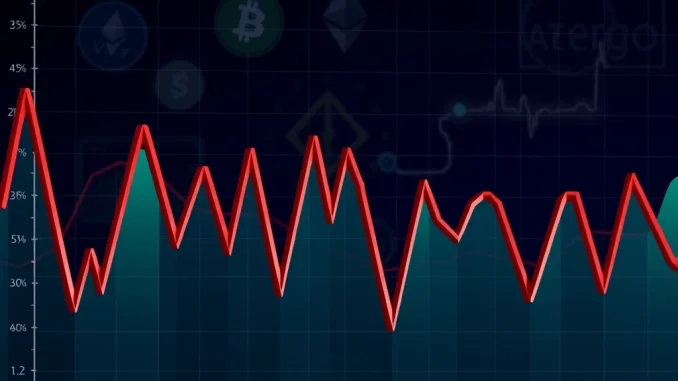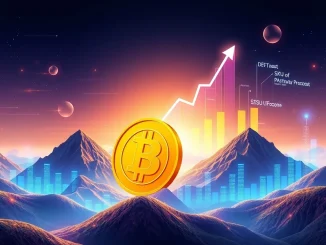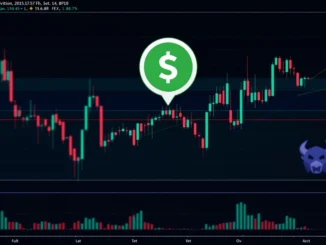
The cryptocurrency market never sleeps, and neither do the dramatic swings that can lead to significant liquidations for traders. In the last 24 hours, the volatile nature of digital assets has once again been on full display, resulting in millions wiped out from leveraged positions. Are you curious to know where the biggest hits were and what it means for the market? Let’s dive into the urgent breakdown of crypto perpetual futures liquidations over the past day and uncover the key insights you need to stay ahead.
Understanding Crypto Perpetual Futures Liquidations
Before we delve into the specifics, it’s crucial to understand what crypto perpetual futures liquidations actually are. In simple terms, liquidation occurs when a trader using leverage in perpetual futures contracts doesn’t have enough funds to cover their losing position. Think of it as a margin call on steroids. Because perpetual futures contracts don’t have an expiry date like traditional futures, traders can hold positions indefinitely, making them a popular but risky tool. When the price moves against a trader’s position and their margin balance falls below the maintenance margin level, the exchange automatically closes their position to prevent further losses. This is liquidation, and it can happen swiftly in the highly volatile crypto market.
Here’s a quick rundown of why liquidations are important to understand:
- Market Volatility Indicator: High liquidation volumes often signal periods of increased market volatility and potential trend reversals.
- Risk Management Lesson: Liquidations serve as a stark reminder of the risks associated with high leverage trading in crypto.
- Market Sentiment Gauge: The ratio of long versus short liquidations can offer insights into the prevailing market sentiment.
24-Hour Crypto Liquidation Breakdown: A Detailed Analysis
Now, let’s get to the heart of the matter – the 24-hour crypto liquidation breakdown. The following data reveals which cryptocurrencies experienced the most significant liquidations and whether long or short positions were primarily affected.
| Cryptocurrency | Liquidation Volume (24h) | Dominant Position | Percentage |
|---|---|---|---|
| BTC | $64.43 million | Long | 57.47% |
| ETH | $53.62 million | Long | 66.63% |
| AERGO | $32.56 million | Short | 61.15% |
Let’s break down what these numbers truly signify for each cryptocurrency.
Bitcoin (BTC) Liquidations: Long Positions Dominated
BTC liquidation volume topped the charts at $64.43 million in the last 24 hours. Interestingly, the majority of these liquidations, a significant 57.47%, were from long positions. This suggests that a price downturn in Bitcoin caught many bullish traders off guard, triggering a cascade of liquidations. When long positions are liquidated, it often adds further downward pressure on the price, potentially exacerbating the initial dip. This highlights the inherent risk in longing Bitcoin with high leverage, even for seasoned traders. Was this a minor correction or a sign of a larger trend reversal? The market will reveal its hand soon, but for now, Bitcoin traders have felt the sting of volatility.
Ethereum (ETH) Liquidations: Bulls Feeling the Pressure
Ethereum, the second-largest cryptocurrency, wasn’t far behind in liquidation volume, registering $53.62 million. Similar to Bitcoin, ETH liquidation data shows that long positions were overwhelmingly liquidated, accounting for 66.63% of the total. This even higher percentage of long liquidations in ETH compared to BTC might indicate a stronger bullish sentiment prevailing among ETH traders, or perhaps a more aggressive use of leverage on Ethereum positions. Whatever the reason, the data is clear: a significant number of Ethereum bulls were liquidated in the past 24 hours, indicating considerable price movement against long positions. This raises questions about the immediate outlook for Ethereum and whether it can recover quickly from this liquidation event.
AERGO (AERGO) Liquidations: Short Sellers Caught Off Guard
In a surprising twist, AERGO, a lesser-known cryptocurrency compared to BTC and ETH, saw substantial AERGO liquidation volume of $32.56 million. However, unlike Bitcoin and Ethereum, the dominant side liquidated in AERGO was short positions, making up 61.15% of the total. This suggests that AERGO experienced a price surge in the last 24 hours, squeezing short sellers and triggering liquidations as the price moved against their bearish bets. This scenario underscores that volatility isn’t limited to just the major cryptocurrencies; altcoins like AERGO can also experience dramatic price swings that lead to significant liquidations, sometimes in unexpected directions. For traders focused solely on Bitcoin and Ethereum, the AERGO data serves as a valuable reminder to keep an eye on the broader market and the potential for sudden pumps in altcoins.
Decoding Long vs. Short Liquidations in Crypto
Understanding the difference between long and short liquidations is key to interpreting market movements.
- Long Liquidation: Occurs when traders betting on a price increase (going long) are forced to close their positions due to a price decrease. High long liquidations can indicate a sudden bearish turn or a market correction.
- Short Liquidation: Happens when traders betting on a price decrease (going short) are liquidated because of a price increase. High short liquidations often suggest a short squeeze, where a rapid price pump forces short sellers to buy back the asset to cover their positions, further driving up the price.
In the context of the 24-hour data, the dominance of long liquidations in BTC and ETH suggests a general market downturn or correction, while the short liquidations in AERGO point to a specific bullish event for that particular asset.
Navigating the Crypto Market: Strategies to Avoid Liquidations
Liquidations are a painful reality of leveraged crypto trading, but they are not inevitable. Here are a few actionable insights to help you navigate the market more safely and reduce your risk of liquidation:
- Use Lower Leverage: The simplest way to reduce liquidation risk is to use less leverage. While high leverage can amplify profits, it also magnifies losses. Consider starting with lower leverage ratios until you are comfortable and consistently profitable.
- Set Stop-Loss Orders: Always use stop-loss orders to automatically close your position if the price moves against you beyond a certain point. This limits your potential losses and prevents your position from reaching liquidation.
- Monitor Margin Levels: Keep a close eye on your margin levels and ensure you have sufficient funds to maintain your positions, especially during volatile periods.
- Stay Informed: Keep up-to-date with market news and analysis to anticipate potential volatility triggers. Being informed can help you make more strategic trading decisions and adjust your positions proactively.
- Diversify Your Portfolio: Don’t put all your eggs in one basket. Diversifying your crypto portfolio across different assets can help mitigate risk.
Conclusion: Volatility is the Name of the Game
The 24-hour crypto perpetual futures liquidation breakdown serves as a powerful reminder of the inherent volatility and risks within the cryptocurrency market. While leverage can offer enticing opportunities for profit, it comes with the significant danger of liquidation. By understanding liquidation dynamics, practicing robust risk management, and staying informed, traders can navigate these turbulent waters more effectively. The crypto market is constantly evolving, and vigilance, coupled with smart strategies, is your best defense against unexpected liquidation events. Stay safe and trade wisely!



